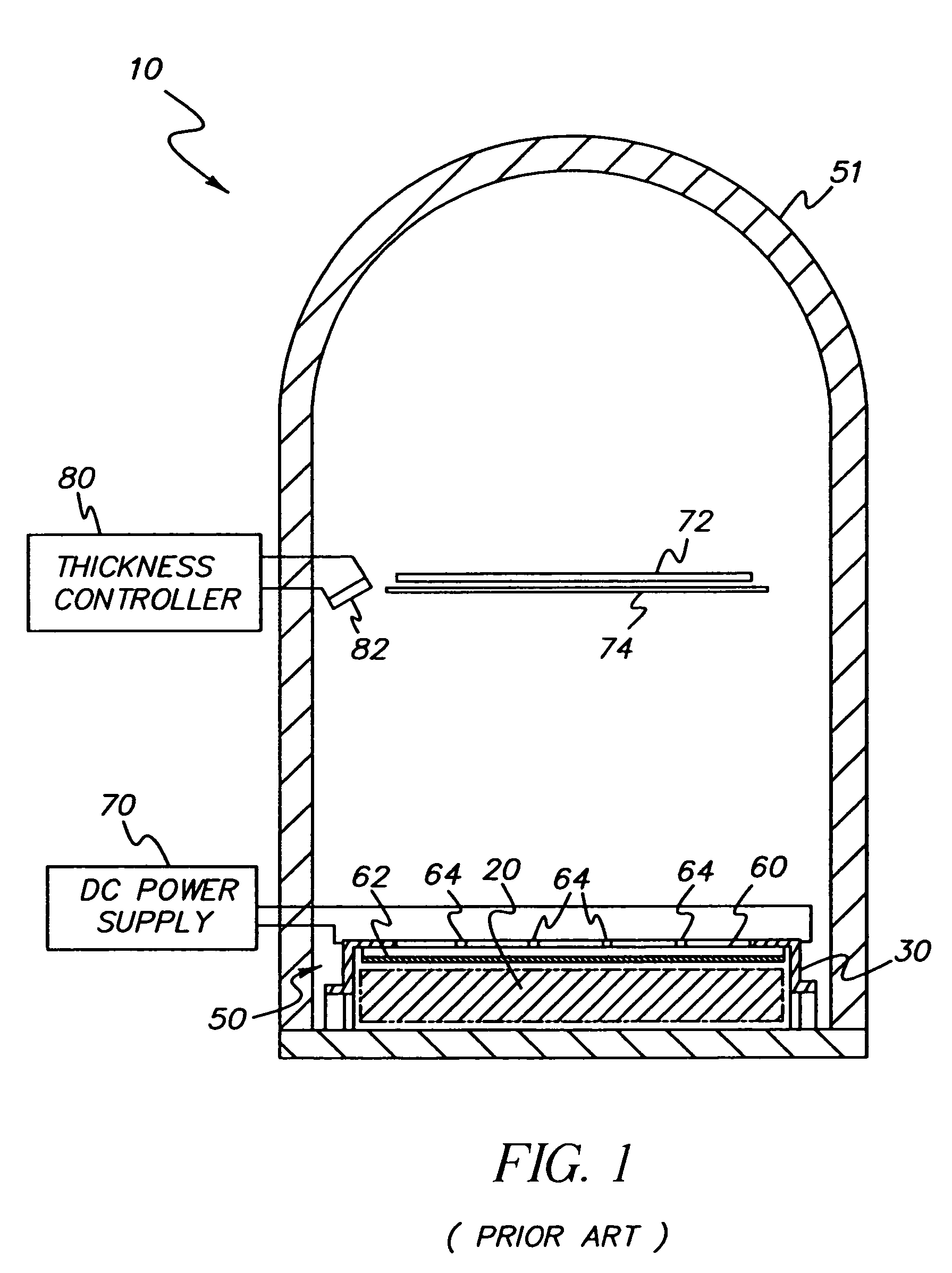Organic materials for an evaporation source
a technology of organic materials and evaporation sources, applied in vacuum evaporation coatings, chemical vapor deposition coatings, coatings, etc., to achieve the effect of making organic layers
- Summary
- Abstract
- Description
- Claims
- Application Information
AI Technical Summary
Benefits of technology
Problems solved by technology
Method used
Image
Examples
example 1
[0059 is shown graphically in FIG. 6. The physical parameters used in this example are typical for OLED materials and those parameters may be treated as a baseline for Examples 2 through 8. The heat flux, 0.1 W / cm2, results in the usage of 80%. Examples 2 through 8 show how the numerical value of M and as a result the usage of the compacted pellet changes drastically from those in Example 1 if only a few parameters are varied slightly. The examples in Table 1 therefore suggest that one can predict very precisely the performance of a single evaporation source well ahead of the deposition process.
example 2
[0060 is presented graphically in FIG. 7. In this case, the sublimation temperature of the dopant component is 150° C. instead of 200° C. and all other parameters are exactly the same as in Example 1. The usage is decreased to 77%. An increase in the difference in sublimation temperatures between the host and dopant components will tend to decrease the usage of a compacted pellet.
[0061]Example 3 is presented graphically in FIG. 8. In this case, the only parameter changed is the heat flux applied to the compacted pellet which is 0.05 W / cm2 as compared to 0.1 W / cm2 as in Example 2. The usage is decreased to 65%. A decrease in applied heat flux will decrease the usage.
[0062]Example 4 is shown graphically in FIG. 9. In this case, the heat flux applied to the pellet is 0.2 W / cm2 and all other parameters are the same as in Example 2. The usage is increased to 86%. An increase in applied heat flux from the top surface while other physical parameters remain the same for a compacted pellet r...
PUM
| Property | Measurement | Unit |
|---|---|---|
| physical density | aaaaa | aaaaa |
| physical density | aaaaa | aaaaa |
| vertical length | aaaaa | aaaaa |
Abstract
Description
Claims
Application Information
 Login to View More
Login to View More - R&D
- Intellectual Property
- Life Sciences
- Materials
- Tech Scout
- Unparalleled Data Quality
- Higher Quality Content
- 60% Fewer Hallucinations
Browse by: Latest US Patents, China's latest patents, Technical Efficacy Thesaurus, Application Domain, Technology Topic, Popular Technical Reports.
© 2025 PatSnap. All rights reserved.Legal|Privacy policy|Modern Slavery Act Transparency Statement|Sitemap|About US| Contact US: help@patsnap.com



